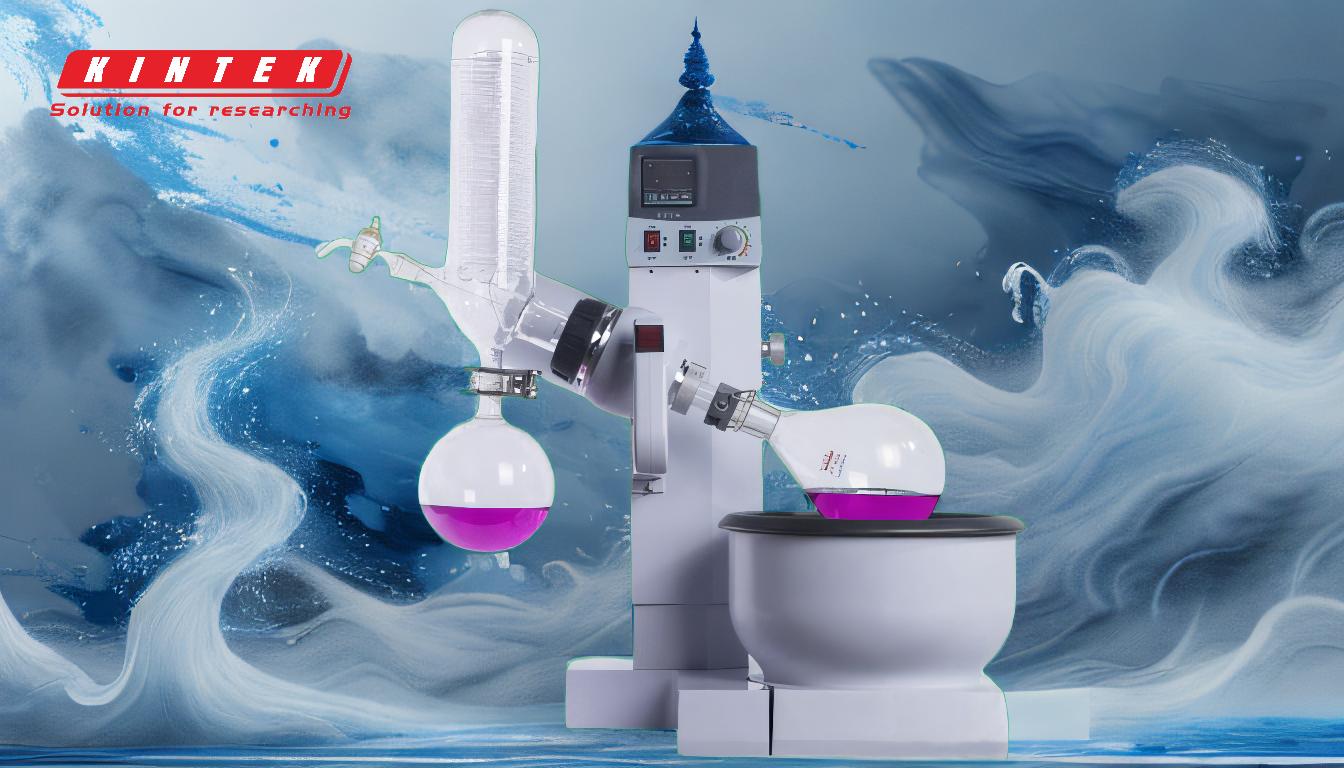Evaporating solvents without a rotary evaporator is achievable through various alternative methods, each suited to specific laboratory needs and sample types. Common techniques include nitrogen evaporation, centrifugal evaporation, vacuum-vortex evaporation, and the use of specialized equipment like Falling Film Evaporators and Wiped Film Evaporators. These methods leverage principles such as mixing, vacuum induction, and thermal separation to efficiently remove solvents. The choice of method depends on factors such as sample volume, solvent type, and desired evaporation speed. Below, we explore these alternatives in detail, highlighting their mechanisms, applications, and advantages.
Key Points Explained:

-
Nitrogen Evaporation
- Mechanism: Nitrogen evaporation involves blowing a stream of nitrogen gas over the surface of the solvent. This increases the rate of evaporation by reducing the partial pressure of the solvent and promoting its transition from liquid to gas.
- Applications: Ideal for small volumes of solvents, especially in analytical chemistry and sample preparation for chromatography.
-
Advantages:
- Gentle on heat-sensitive compounds.
- No need for high temperatures or vacuum conditions.
- Suitable for volatile solvents.
-
Centrifugal Evaporation
- Mechanism: This method uses centrifugal force combined with vacuum and heat to evaporate solvents. Samples are placed in a rotating chamber, and the combination of reduced pressure and centrifugal force accelerates evaporation.
- Applications: Commonly used for high-throughput evaporation of multiple small samples, such as in drug discovery or proteomics.
-
Advantages:
- Efficient for small sample volumes.
- Prevents cross-contamination between samples.
- Reduces the risk of bumping or boiling over.
-
Vacuum-Vortex Evaporation
- Mechanism: A vacuum is applied to reduce the pressure, lowering the boiling point of the solvent. Simultaneously, vortex mixing ensures uniform evaporation by increasing the surface area exposed to the reduced pressure.
- Applications: Suitable for medium to large volumes of solvents, particularly in organic synthesis and sample concentration.
-
Advantages:
- Faster evaporation compared to static vacuum methods.
- Effective for solvents with higher boiling points.
- Minimizes the risk of sample degradation.
-
Falling Film Evaporator
- Mechanism: This equipment operates similarly to a Vertical Shell & Tube Heat Exchanger. The solvent flows as a thin film over heated surfaces, allowing efficient heat transfer and evaporation.
- Applications: Best for large-scale evaporation of heat-sensitive materials, such as in food processing or pharmaceutical manufacturing.
-
Advantages:
- High efficiency for continuous processes.
- Gentle on heat-sensitive compounds due to short residence time.
- Scalable for industrial applications.
-
Wiped Film Evaporator
- Mechanism: This device uses a rotating wiper to spread the solvent into a thin, turbulent film over a heated surface. The turbulence enhances heat transfer and evaporation rates.
- Applications: Ideal for viscous or heat-sensitive solvents, such as in polymer processing or essential oil extraction.
-
Advantages:
- Handles high-viscosity materials effectively.
- Provides precise control over evaporation conditions.
- Suitable for batch or continuous operations.
-
General Tips for Solvent Evaporation Without a Rotary Evaporator
- Use of Mixing: Agitation or stirring increases the surface area of the solvent, speeding up evaporation.
- Vacuum Induction: Applying a vacuum lowers the boiling point of the solvent, reducing the energy required for evaporation.
- Heat Control: If heating is used, ensure it is gentle and controlled to avoid sample degradation.
- Safety Considerations: Always work in a well-ventilated area or fume hood, especially when handling volatile solvents.
By understanding the principles and applications of these methods, you can select the most appropriate technique for your specific needs, ensuring efficient and safe solvent evaporation without relying on a rotary evaporator.
Summary Table:
| Method | Mechanism | Applications | Advantages |
|---|---|---|---|
| Nitrogen Evaporation | Blows nitrogen gas to reduce solvent partial pressure, promoting evaporation. | Small volumes, analytical chemistry, chromatography. | Gentle on heat-sensitive compounds, no high temps or vacuum needed. |
| Centrifugal Evaporation | Combines centrifugal force, vacuum, and heat for rapid evaporation. | High-throughput small samples, drug discovery, proteomics. | Prevents cross-contamination, reduces bumping or boiling over. |
| Vacuum-Vortex Evaporation | Applies vacuum and vortex mixing for uniform evaporation. | Medium to large volumes, organic synthesis, sample concentration. | Faster evaporation, effective for high-boiling solvents, minimizes degradation. |
| Falling Film Evaporator | Solvent flows as a thin film over heated surfaces for efficient evaporation. | Large-scale, heat-sensitive materials, food processing, pharmaceuticals. | High efficiency, gentle on heat-sensitive compounds, scalable. |
| Wiped Film Evaporator | Uses rotating wipers to create turbulent solvent films for enhanced evaporation. | Viscous or heat-sensitive solvents, polymer processing, essential oils. | Handles high-viscosity materials, precise control, suitable for batch/continuous. |
Need help selecting the best solvent evaporation method for your lab? Contact our experts today for personalized guidance!









